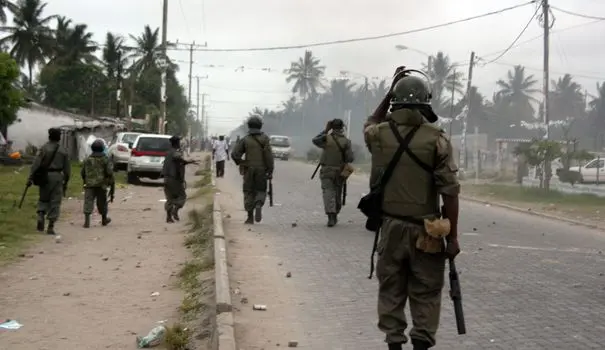- P.O. Box: 11482 Yaoundé, Cameroon; Headquarters: Efoulan, Yaoundé 3
- contact@caessinternational.org

Since 2017, Mozambique has faced Islamist insurgents in the northern part of its territory, particularly in the Cabo Delgado region, the town of Palma, and the port city of Mocimboa da Praia. Until August 2021, these two regions were under the control of jihadists, also called “Chabab.” Thanks to the deployment of troops from the Southern African Development Community (SADC) and Rwanda in September 2021, Mozambique was able to counter and dislodge the insurgents from the main areas they occupied. This resulted in a decrease in attacks by more than 50% between 2020 and 2021. However, with the near-daily frequency of jihadist attacks, the risk of opening a new front is growing, especially in the Niassa region, still located in the north of the country.
Indeed, in November 2021 alone, the Armed Conflict Location & Event Data Project (ACLED) recorded 37 violent incidents causing around one hundred casualties, particularly in the Cabo Delgado area where SADC troops are stationed. Although the jihadist groups no longer have access to their main supply routes, dispersed cells continue to prevent the effective return of 800,000 internally displaced persons. The local security situation remains volatile despite constant patrols by defense and security forces. Jihadists affiliated with the terrorist group “Islamic State” (IS) have not been completely defeated. Moreover, their mobile cells prevent not only the return of displaced populations but also the return of multinational companies like TotalEnergies to the north.
In this context, the development by Islamist insurgents of new supply sources with neighboring countries such as Malawi and Tanzania remains possible, with recruitment opportunities for new members originating from the Niassa region. The jihadists’ pivot to the Niassa region after being dislodged from Cabo Delgado suggests a possible return to those areas where they were temporarily defeated, after the departure of SADC and Rwandan troops (approximately 2,000 men). In terms of the current situation and overall assessment, the following can be noted:
The extension of the SADC mission, initially planned for three (03) months;
The death of 200 Chabab fighters and 10 of their commanders in 2021, out of an officially estimated total of 2,500 insurgents;
The European Union (EU) sending a military training mission aiming to train rapid intervention units within the Mozambican army over two (02) years;
A major humanitarian crisis with over 3,000 dead, approximately 600 women kidnapped and enslaved by jihadists since 2018, though some have been rescued and others remain missing, according to Human Rights Watch;
More than one million people suffering from acute food insecurity in the north, according to the World Food Programme (WFP).
However, Mozambique’s reliance on internal funding sources is not sustainable, given the high cost of operations. This highlights the need to diversify funding. Moreover, combating jihadism requires a comprehensive approach, not solely military, as the causes also stem from poor governance. Indeed, Cabo Delgado is among the poorest regions of the country; there is a lack of infrastructure and opportunities for youth, especially in the north; and tensions over the mismanagement of the benefits from the discovery of huge ruby and gas reserves in 2010 are severe. These factors have also contributed to the insurgency of the jihadists, whose structure, nature, ideological motivation, and links to IS remain unclear.